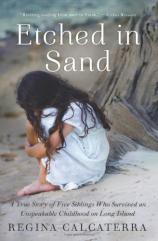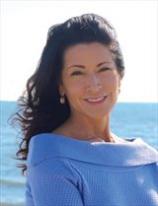Excerpt
Excerpt
Etched in Sand

Prologue
I hadn’t seen New York City this still since 9/11. Lower Manhattan was a ghost town --- there were no planes in the sky, no boats on the East River, no buses, no trains rumbling in the subway. This was Wall Street, normally the most bustling street in the world . . . but where I stood at the Wall Street Heliport, I was the only one present.
Because there was no traffic on my drive from Long Island to Manhattan, I was the earliest to arrive for the first official helicopter flyover after Hurricane Sandy. Soon everyone began to emerge from their vehicles: the governor of New York State, Andrew Cuomo; New York’s two United States senators, Chuck Schumer and Kirsten Gillibrand; senior gubernatorial cabinet officials; and my colleagues from Nassau and Westchester Counties. We greeted one another in a manner both solemn and cordial, taking note of how a tragedy makes professional interactions seem much more personal. Wearing jeans, windbreakers, and boots, we exchanged details of the storm, our objective intensely clear. It was up to us to try and heal this region after Sandy’s destruction.
Within moments three military helicopters broke through the fog as assured as eagles. With the press and security now present, there were a couple dozen of us, all standing quietly as the copters whipped the vinyl of our coats and finally touched down on the pad. I felt a collective awareness among us that not even the roar of the propellers could cut through the heaviness of that morning. It struck me as one of the eeriest moments in my life: The silence was actually louder than the noise.
As the chief deputy executive of Suffolk County, I waited my turn to climb into the helicopter and by chance wound up in a seat that would give me a solid view of Long Island after we surveyed the damage in New York City. We took the military aviator’s instructions and placed the headphones over our ears. When the helicopter took off for Breezy Point in Queens, where a fire had ravaged a neighborhood during Sandy, the silence loomed again. Blocks of homes were charred. Families had lost everything. For me to have been managing the storm crises in Suffolk County while hearing the reports of how these Queens residents were trying to escape the area was one thing. Now to witness the damage where homes and lives had been destroyed was a completely surreal moment.
My heart pounded as we neared Suffolk and I prepared to address my county’s devastation for this group of elected officials I respected so greatly. “Which town in Suffolk had the most damage?” one of them asked.
I hurried to push the microphone button on the headset as our aviator had shown us. “Lindenhurst,” I answered. The group nodded and gazed back out the window, as though they understood why Lindenhurst holds a special significance to me: It’s where I was born. It’s also the place where three decades later, I learned my background from family I’d never known existed. My mother left behind scorched earth with the same totality that Mother Nature had swept my island. For years, Suffolk County transported me back to the pain and darkness my four siblings and I endured throughout our fatherless childhoods with a profoundly troubled mother. Now, as I examined it from the sky, my emotions swelled with a love for this place --- how the experiences of growing up here made me who I am. Hovering above as a leader in the aftermath of Sandy struck me deeply. Aside from the love I shared with my siblings, this county was our only sense of home --- a place that did its best to protect us from the unpredictable. I never could have imagined that one day I’d be called on to return the same security.
What drew me to a career in public service was my appreciation for government’s purpose: It’s the body that decides who receives which resources, and how much of them. My childhood on Long Island gave me a very personal awareness for how people in power can impact the lives of others. Growing up here I faced extraordinary struggles that would have tested any child’s strength and endurance. Somehow, with optimism and determination, my siblings and I could usually manage to find someone who was willing to lift us to help. My cast of resolute characters is composed of my older sister Camille, who is forever my closest confidante; and our three siblings --- Cherie, the eldest, who found escape from our childhood in a teen marriage; Norman, fourth in birth order just behind me; and our youngest sister, Rosie. As a scrappy pack of homeless siblings wandering the beach communities of Long Island, sometimes we’d sneak off to the Long Island Sound or the Atlantic’s shore --- the wild, windy places where it didn’t matter who we were, what we wore, or how tousled we appeared. With our hands and empty clamshells as our tools, we’d build sand castles by the water, or etch out all five of our names
Cherie Camille Regina Norman Rosie
and enclose each with a heart. We’d run, squealing, as the waves roared upon the shore and rolled back in rhythm, unsentimentally washing away our work. Then we’d run back toward the water and create it all anew.
We didn’t know it then, but that persistence would become the metaphor to predict how we’d all choose to live our lives. No accomplishment has taken place without trial, and no growth could have occurred without unwavering love. This is the story of how it took a community to raise a child . . . and how that child used her future to give hope back.
Etched in Sand
- paperback: 320 pages
- Publisher: William Morrow Paperbacks
- ISBN-10: 0062218832
- ISBN-13: 9780062218834








